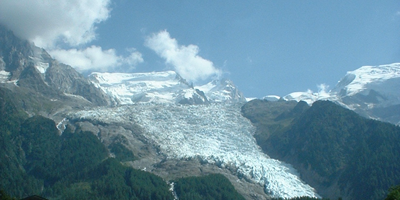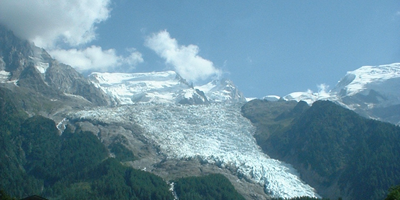Granular Flow of a Melting Avalanche
In September 2002, one hundred million cubic meters of rock and ice separated from the northern slope of the Kazbek massif in North Ossetia, Russia. Traveling at times at nearly km/hour, the resultant avalanche killed dozens of people and caused widespread damage. Ice avalanches from collapsing glaciers are not common in populated areas, but that may change as global temperatures rise. The Ossetia avalanche alerted researchers to the urgency of gaining a better understanding of the processes that control such flows.
In a paper in Physical Review Letters, Barbara Turnbull at the University of Nottingham, UK, tells us how she measured the significant effect of melting on the behavior of ice flows, which therefore differ from dry granular shear flows. In a series of four seemingly simple yet carefully controlled experiments, the author recorded high-speed video of the motion of ice particles that partially fill a slowly rotating narrow drum. The observations appear to confirm that lubrication and capillary action resulting from melting and wetting provide a positive feedback to granular ice flow, like avalanches. Interfacial melting increases flow velocity, which in turn speeds up the melting. However, the real achievement of the reported experiments is that researchers now have a controlled setup with which to study an urgent real-world scenario that has always been difficult to measure. – Sami Mitra





